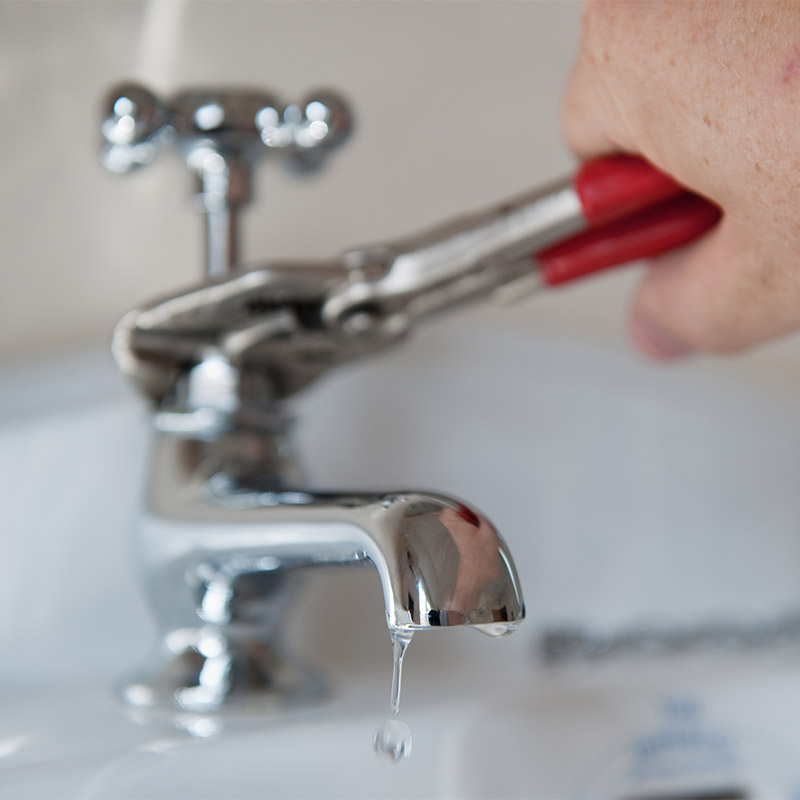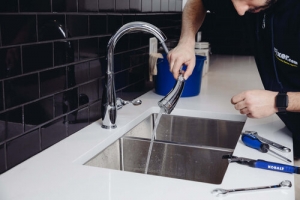Just how do you feel about Leaky Faucets: Why They Happen & What to Do About Them?

Dripping taps might appear like a minor trouble, but their impact goes beyond simply the aggravation of the sound. From wasting water to sustaining unnecessary economic costs and health threats, overlooking a leaking tap can bring about different consequences. In this post, we'll delve into why it's crucial to resolve this typical family problem promptly and properly.
Wastage of Water
Environmental Impact
Dripping faucets contribute dramatically to water wastage. According to the Epa (EPA), a single faucet trickling at one drip per secondly can squander greater than 3,000 gallons of water annually. This not only pressures water resources but also affects ecological communities and wildlife depending on them.
Financial Prices
Enhanced Water Costs
Past the ecological impact, dripping taps can inflate water costs substantially. The gathered wastage gradually translates into greater utility expenditures, which might have been stayed clear of with prompt repairs.
Prospective Residential Property Damage
Additionally, long term leaking can result in damage to components and surfaces surrounding the faucet. Water build-up can cause discoloration, deterioration, and even structural problems if left ignored, leading to added repair service costs.
Wellness Worries
Mold and Mildew Growth
The constant visibility of moisture from a leaking tap creates an optimal atmosphere for mold and mildew and mildew growth. These fungis not just endanger interior air high quality yet additionally position health and wellness dangers, specifically for people with respiratory system problems or allergic reactions.
Waterborne Conditions
Stagnant water in leaking faucets can become a breeding place for bacteria and other microorganisms, raising the threat of waterborne diseases. Contaminants such as Legionella bacteria grow in stationary water, possibly bring about significant health problems when ingested or breathed in.
Do it yourself vs. Expert Fixing
Pros and Cons of Do It Yourself Fixing
While some may attempt to deal with a trickling tap themselves, do it yourself fixings feature their own collection of challenges. Without appropriate expertise and devices, do it yourself efforts can intensify the problem or bring about insufficient repair services, prolonging the issue.
Advantages of Hiring a Professional Plumber
Hiring a specialist plumber makes certain that the underlying root cause of the dripping tap is attended to effectively. Plumbings possess the expertise and equipment to detect and repair faucet issues efficiently, saving time and lessening the danger of more damage.
Step-by-Step Guide to Dealing With a Dripping Tap
Tools Called for
Prior to attempting to repair a dripping faucet, gather the essential devices, including a flexible wrench, screwdrivers, replacement components (such as washers or cartridges), and plumber's tape.
Common Tap Issues and Their Solutions
Identify the sort of faucet and the details issue causing the drip. Usual issues consist of damaged washing machines, corroded valve seats, or malfunctioning O-rings. Refer to manufacturer guidelines or online tutorials for step-by-step support on repair services.
Safety nets
Normal Upkeep Tips
To prevent leaking taps, execute regular upkeep such as cleansing aerators, evaluating for leakages, and replacing damaged parts immediately. In addition, take into consideration setting up water-saving devices or upgrading to much more efficient fixtures.
Value of Prompt Services
Attending to dripping faucets as soon as they're noticed stops additional water wastefulness and prospective damage, inevitably saving both water and cash in the long run.
Effect On Residential Or Commercial Property Worth
Perception of Well-Maintained Property
Preserving a home in good condition, consisting of attending to maintenance problems like trickling faucets, enhances its viewed value and desirability amongst potential customers or tenants.
Influence on Resale Worth
Qualities with properly maintained plumbing fixtures, consisting of faucets, command greater resale worths in the realty market. Attending to trickling faucets can contribute to a favorable impression during home assessments and settlements.
Ecological Duty
Private Payment to Conservation
Taking obligation for taking care of leaking taps straightens with more comprehensive efforts towards water preservation and environmental sustainability. Every individual's activities collectively make a substantial effect on maintaining valuable sources.
Lasting Living Practices
By focusing on prompt repairs and embracing water-saving behaviors, people add to lasting living methods that benefit both existing and future generations.
Final thought
Attending to a dripping tap exceeds plain comfort; it's a vital action toward saving water, minimizing monetary prices, and protecting wellness and residential or commercial property. Whether through DIY repair work or professional support, acting to take care of trickling taps is a little yet impactful way to advertise responsible stewardship of resources and contribute to a healthier, a lot more lasting future.
How to Fix a Dripping or Leaky Faucet
A leaking faucet is one of the most common problems that homeowners encounter, but it being commonplace doesn’t make it any less annoying. The constant drip drip drip of a leaking bathtub faucet, showerhead, or sink tap can disturb your home’s serenity. Left neglected, a dripping faucet can also result in higher water bills and discoloration or mold growth in your sink or plumbing fixtures.
Fortunately, you don’t have to be a trained plumber to know how to stop a dripping faucet. With some basic tools, replacement parts, and a little patience, leaky faucet repair is a breeze. In this article, we’ll explain what causes dripping faucets and how you can fix them.
What Causes a Leaking Faucet?
Kitchen and bathroom faucets come in all manner of designs, but most involve some combination of valves, O-rings, seals, and washers. The O-ring is usually the weakest link, but any one of these pieces can wear down over time. Heat, moisture, temperature fluctuations, minerals, mold, and movement can contribute to warping and corrosion, breaking the watertight seal. This just comes with the territory of being a homeowner. Everything is always subject to wear and tear, and some component parts of your appliances and fixtures need to be replaced on occasion. At least replacement O-rings are cheap!
More rarely, dripping faucets can be a symptom of excessively high water pressure. Were this the case in your home, you would probably notice that the leak is not isolated to one faucet. Water pressure issues are harder to resolve on your own. We recommend contacting a professional plumber if you suspect your water pressure is too high.
How to Fix a Dripping Faucet
Pipe wrench or monkey wrench Allen wrench set Screwdrivers Old towel or rag Shut off the water.
Before you do anything, you need to turn off the water to keep from drenching your kitchen or bathroom. You should find a valve under the sink and against the wall. Once you’ve turned this valve, try turning the faucet on to confirm that the water source has been cut off.
If you can’t locate your local valve for the faucet you’re working on, you can always shut off the water to the house at the main valve. Of course, this will prohibit anyone from using the sinks, showers, or toilets while you’re working on the faucet that’s giving you trouble.
Plug or block the drain.
You’ll be disassembling the faucet and removing some small bits of hardware. Plug the drain with a stopper or rag to avoid the possibility of a small screw falling into your P-trap.
Take apart the faucet assembly.
There are several varieties of kitchen and bathroom faucets, each with its own manner of assembly. For detailed instructions on how to disassemble your faucet, you can refer to the fixture’s manual or contact the manufacturer. If you know whether you have a ball, disc, cartridge, or compression faucet, you can find detailed schematics online.
In general, you need to begin by removing the faucet handles. You might notice a small screw that you’ll need to remove with a screwdriver or Allen wrench. If you don’t see any visible securing hardware, it’s likely hidden under a decorative cap that can be unscrewed or popped off with flathead screwdriver.
Remove each piece methodically, consulting a schematic when necessary. Take notes or arrange the pieces in such a way to make it easier to correctly reassemble the faucet later.
Remove the cartridge.
Once you’ve removed the handles and securing hardware, you should be able to remove the valve cartridge or stem. Some cartridges will slide right out. Other faucet models will require you to loosen a nut with a pipe wrench before you can remove the valve stem.
Examine the exposed hardware.
With the cartridge or stem removed, inspect the component parts. Check the rubber O-rings for wear and tear. Also examine the seat washer for corrosion or other damage. These pieces are usually the responsible parties for a dripping faucet, but it’s worth inspecting the other component parts while you have the faucet disassembled.
Find replacement parts.
Once you’ve identified which faucet component has failed, find an identical replacement. Your local hardware store should have O-rings, seat washers, and other standard components in stock. If you have a luxury or uncommon faucet, you may have to contact the manufacturer for a replacement part.
It’s a good idea to take your old parts with you to the hardware store so you can compare them with the store’s inventory and be sure you’re purchasing the correct replacement.
Reassemble the faucet.
With your new parts in hand, reconstruct the faucet and handles. Don’t be tempted to overtighten screws or nuts. You might think this could create a better seal, but it can instead damage or bend a delicate part of the assembly and create a new problem for you.
Turn on the water and test the faucet.
The only thing left to do is test your work. Unplug the sink, turn the water back on, and try the faucet. Congratulate yourself on a job well done!
https://www.libertyhomeguard.com/how-to-fix-a-dripping-or-leaky-faucet/

I stumbled upon that write up on Leaky Faucets: Why They Happen & What to Do About Them when perusing the search engines. Feel free to take the opportunity to promote this post if you liked it. We recognize the value of reading our article about .